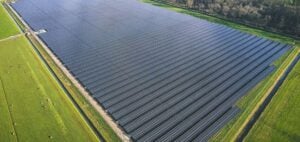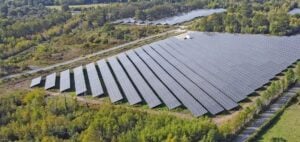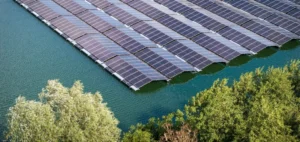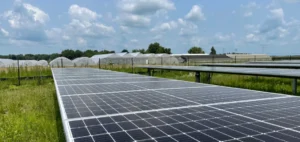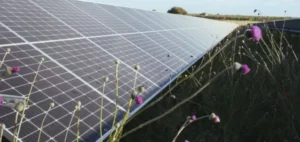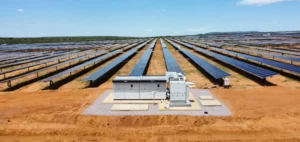RWE AG is continuing to expand its solar portfolio by installing several photovoltaic power plants along the A44n motorway between Bedburg and Jüchen in North Rhine-Westphalia. The German energy group is deploying a total capacity of 86.5 megawatts peak (MWp), or 74.6 megawatts alternating current (MWac), on recultivated land from the former Garzweiler opencast lignite mine. The project includes approximately 141,000 photovoltaic modules, capable of supplying electricity to the equivalent of 27,700 German households.
A solar construction site directly adjacent to road infrastructure
The construction site spans both sides of the A44n, a strategic roadway in the Rhenish region. The land, formerly used for lignite extraction, has been converted to host large-scale solar installations. RWE plans to connect the installations to the electricity grid via the existing infrastructure at the Garzweiler mine. Commissioning is expected by the end of 2025.
Katja Wünschel, Chief Executive Officer of RWE Renewables Europe & Australia, stated that sites along motorways benefit from faster permitting processes and higher local acceptance. She added that these projects could serve as a model for further developments in the region.
Industrial redeployment on mining sites
Dr Lars Kulik, Chief Technical Officer Lignite at RWE Power, explained that the overall project contributes to the structural transformation of the region. The company is using available land around decommissioned mines for photovoltaic plant deployment, while also reusing existing infrastructure and leveraging the technical expertise of its workforce.
Following the same industrial redeployment approach, RWE already operates seven solar farms in the Rhenish region, four of which include integrated battery storage systems. An agrivoltaics demonstration project is also underway near Bedburg.
New projects underway in Hambach
Since April, RWE has also started building a solar power plant on the Hambach mine site near Niederzier. More than 22,000 panels will be installed there, with an expected production capacity sufficient to supply electricity to around 4,500 households. Several other photovoltaic projects in the same region are currently in the planning phase.







